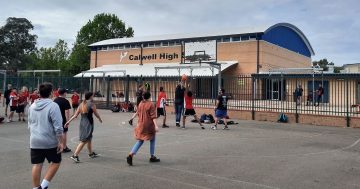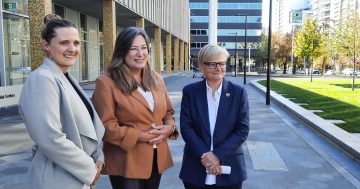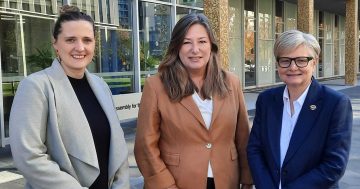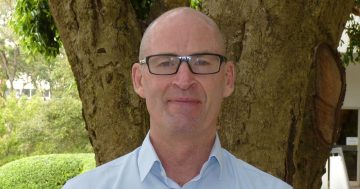
A recent survey revealed concerning upward trends for violence against principals in the ACT. Photo: File.
The Labor-Greens government has voted down the chance to hold an inquiry into the issues facing the ACT’s school principals – including high levels of violence – arguing “the time for talk is now over”.
Shadow Education Minister Jeremy Hanson moved the motion in the Legislative Assembly on Thursday (23 March) in light of a recent report highlighting that three-quarters of responding ACT principals had experienced physical violence or threats of violence – a significantly higher response than in other jurisdictions.
Mr Hanson said the “alarming statistics” warranted further investigation by the Standing Committee on Education and Community Inclusion, so principal workloads and violence towards them could be addressed.
“If the Education Union, principals, teachers and parents are crying out for more action to address these significant concerns, the Minister can no longer turn a blind eye,” he said.
“This is an issue that is urgent.”
It’s also after the Australian Education Union’s ACT branch (AEUACT) said the report revealed a “lack of effective action” by the ACT Government.
The AEUACT’s own survey from April 2022 found 69 per cent of ACT public school principals reported work-related violence over a six-month period, including being sexually assaulted, physically assaulted and intimidated, while 37 per cent reported being bullied, primarily by parents and community members.
AEUACT president Angela Burroughs said the most recent report did “not come as a surprise” and called on the government to conduct focus groups to better understand the underlying factors causing these work safety risks, communicate the results to school leaders and senior managers in the Education Directorate, create an action plan to address these concerns, and conduct ongoing monitoring to make sure the plan was actually working.
“The ACT Government is big on reassurance and commitment to supporting principals in their safety and wellbeing, but light on action,” she said.
“We know what the problems are. It is time to stop talking, and start acting.”
The AEUACT outlined a 10-point action plan, urging the government to directly consult with staff rather than work safety consultants, allow principals to elect their own health and safety representatives, commit funding for occupational violence risk assessments rather than requiring principals to use their own budgets to make schools safe, improve the suspensions process, and ban parents who have been violent or abusive from attending school sites.
“Our members deserve respect and they have a right to be safe in their workplace,” Ms Burroughs said.
“We have not seen a plan from the ACT Government that addresses principal safety and wellbeing concerns.
“That is why we have put forward this ten-point plan, and request that it is immediately implemented.”
Mr Hanson said the Canberra Liberals agreed in principle to the union’s action plan and that it could form the basis of the terms of reference for an inquiry.
“We’ve got a map before us, I think it’s worth going to a committee,” he said.
“Then we as an Assembly can understand the full implications [of the plan], we can best see how it can be implemented, it gives an opportunity for the Education Union to articulate their plan and give the minister and the directorate the chance to respond … it would be a useful process.”
Education Minister Yvette Berry rejected this suggestion, saying an inquiry would delay action on the matter.
“The time for talk is now over,” she said. “We all need to take continued action and not undertake an inquiry into this issue.
“The ACT Government has been working on this for some time and will continue to do so.”
She pointed to the Safe@School Taskforce, a $1.14 million investment to improve the safety and wellbeing of students and staff.
“A significant body of work has been undertaken [into this issue] and is continuing, is in the pipeline, developed hand in hand with principals and their representatives,” Ms Berry said.
“We don’t need another inquiry to tell us what the problem is, we already have the mechanisms in place to talk with and listen to our stakeholders, to understand the issues they’re seeing playing out in our schools, and to take immediate action to respond.”
When asked for an update on the Safe@School Taskforce, an Education Directorate spokesperson said it had been making significant progress.
“This includes a safety notice and alert notification system to communicate important safety messages in a timely manner to key staff, the development of a Work Health and Management System for up-to-date policies, procedures, tools and templates, and training for health and safety representatives (HSRs), negative incident scenario planning, safety culture workshops and due diligence training,” they said.
“There’s been the development of a safety leadership video series, which will draw on the expertise of effective safety leaders in our schools, sharing their best practice approaches and insights, and streamlined processes and procedures in supporting schools to address compliance issues identified by WorkSafe.”
Ms Berry said she had also responded to the AEUACT’s plan and written to Federal Education Minister Jason Clare asking for the issue of community expectations of schools to be included on the agenda for the Education Minister’s meeting.




















